Fears for Australians jailed in Iran after Saudi Arabia oil attack
An attack on Saudi Arabia’s oil industry threatens to create a global war with catastrophic economic and human costs — not least for three Aussies languishing in an Iran jail.
World
Don't miss out on the headlines from World. Followed categories will be added to My News.
On a routine patrol in the Arabian Sea 170 nautical miles off the coast of Oman, the crew of HMAS Darwin operating as part of a multinational counter terrorism and maritime security force, spotted a fishing vessel acting suspiciously.
The frigate’s crew prepared a boarding party for “flag verification” and intercepted the vessel.
On board, rather than the usual drugs or indeed fish, they found 1989 weapons including Kalashnikov AK-47s, 49 heavy calibre machine guns and an assortment of 60mm mortar tubes and spare gun barrels.
But secreted in the vessel under fishing nets was also a smaller cache with bigger implications — 100 (RPG-7 style) rocket propelled grenade launchers branded — made in Iran.
The weapon seizures in 2016 were suspected to have been en route to rebels in Somalia but US intelligence passed to ADF intelligence later that year determined it was part of five intercepted shipments of Iranian and Russian weapons dispatched to help the Iranian-backed Houthi rebels in Yemen.
Trump warns he may do ‘dastardly things’ to Iran
Truth the first casualty in the Middle East
Australia needs more travellers like Joely and Mark
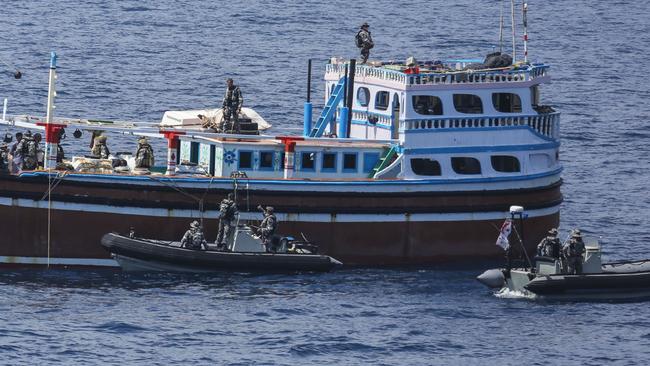
Markings found on the rocket launchers particularly and other large-haul weapon seizures during similar interceptions by the US patrol boat USS Sirocco and French Navy’s FS Provence matched those recovered from captured Houthi fighters, the fake fishermen’s Farsi accents were believed to be Iranian and the vessel tracked from Iran.
The weapons’ serial numbers were also sequential suggesting they had come from a national stockpile.
It was the first and now no longer the last clear evidence supporting suspicions Iran was arming the Houthi’s in the civil war against a coalition of forces in Yemen notably led by Saudi Arabia and the United Arab Emirates.
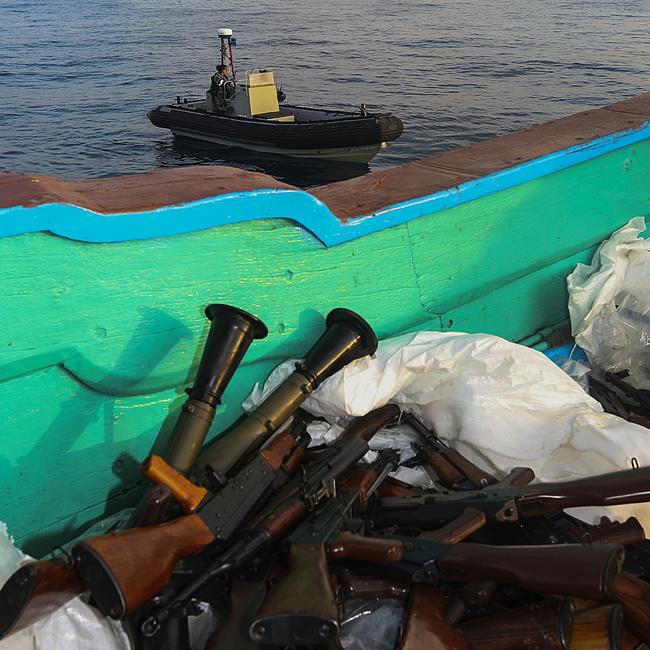

The attack last weekend at the world’s largest oil processing plant and an oilfield in Saudi Arabia was not an isolated incident but rather a sinister culmination of simmering conflict that now threatens to boil over and create a Middle East-wide war that will undoubtedly involve Australia.
Australia is already committed to the so-called International Maritime Security Construct in the Strait of Hormuz, the narrow mouth of the Persian Gulf through which a fifth of the world’s oil travels, with the US, UK, Bahrain and now Saudi Arabia and has supported coalition forces in every Middle East conflict dating back a century.


The world is roiling over the latest attack on a global energy line which has seen prices at the petrol pump around the world rise but has set a course for the White House to again call on Allies to back a new military offensive or intervention.
But in an epoch of drones and swarms and remote computer-driven missile attacks from thousands of kilometres away just what that conflict could look like is anyone’s guess.
And where would such a conflict leave three Australians in Iranian jails on spurious charges of spying?
The pre-dawn attack last Saturday on the Saudi Abqaiq facility and Khurais oilfield by 18 drones and seven cruise missile was the worst on regional oil facilities since Iraq’s Saddam Hussein torched Kuwait’s oil wells during the 1990-91 Gulf crisis.
While no lives were lost, the September 14 attack knock out half of the crude output from the world’s top exporter representing about five per cent of global fuel supply, cutting output by 5.7 million barrels a day.
MORE NEWS:
Morrison to cement mateship with Trump
Brothers guilty of Etihad plane bomb plot
Bulgaria frees jailed ex Sydney schoolboy
‘Don’t go’: Aussies told to avoid Bali bonk ban

Both Riyadh and Washington said investigation indicated the weapons used, a combination of drones and rocket-propelled precision missiles, were Iranian and the launch location was Iran.
The Saudi have a multi-billion dollar missile defence system but the below-radar drones, that give off no radar signature, and Quds-1 cruise missiles that fly low and follow the Earth’s curve, hit their mark undetected.
The attack was preceded by a series of explosive blasts on tankers in Gulf waters, including two Saudi vessels in May, and attacks on other Saudi assets including two oil pumping stations hit that month and a transformer station near a desalination plant in Shuqaiq in the south in June.
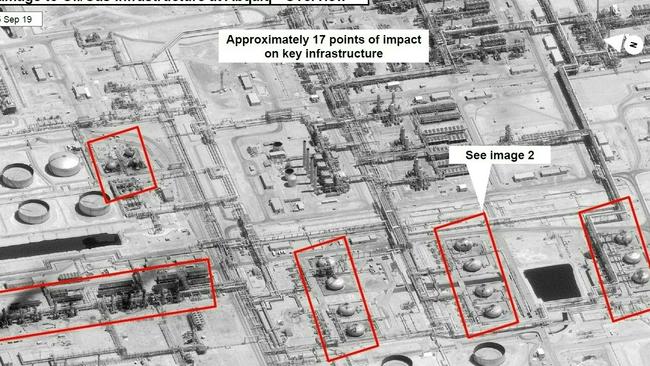
The Houthis have used off-the-shelf hobby drones, but then Iranian-made UAV-X drones with a 1500km range that can cost as little as $20,000 each have reportedly been used in the more recent attacks requiring a level of sophistication and precision, including geospatial intelligence and imagery, that the Houthis could not have or questionable whether Iran has developed.
European powers notably France and the UK had distanced themselves from Trump’s hawkish line on Iran and sought to preserve a deal on Tehran’s nuclear program, from which the US withdrew.
Western nations have also been reluctant to support America’s hard line crippling sanctions on Iran.
Trump also backed away from talks with the Taliban this month, which could have ended the US, and by default Australia’s, longest ever war in Afghanistan.
The ADF has had personnel there for an incredible 18 years.
But UK and Germany have now called for a “collective response” to the latest incident and the UN called on to rule on the possibility of action. The UN General Assembly gathers this week.
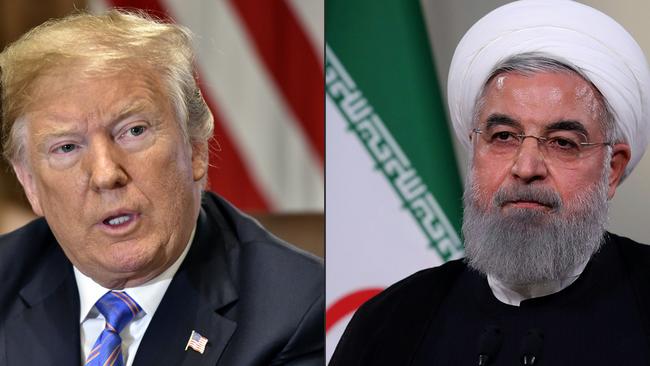
As far back as 1994 the US warned a future war could be fought by “fire ant warfare” involving weaponised swarms of drones and that is now a reality.
Australia is already in the immediate region, under Operation Manitou of which the Darwin was deployed. Under the Hormuz patrol, it will deploy a small number of ADF personnel to Bahrain, a single RAAF P-8 Poseidon spy plane and a frigate for six months sometime in 2020.
Trump yesterday said he would lift sanctions against Iran but war was an option.
“There are many options, there’s the ultimate option and there are options that are a lot less than that. And we’ll see,” Trump told reporters in Los Angeles.
“I’m saying the ultimate option meaning go in — war.”
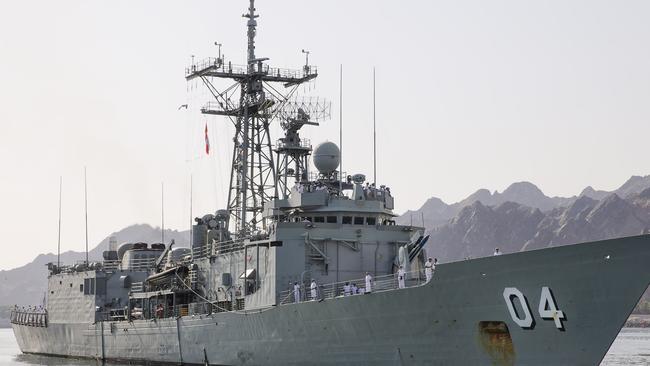
Australian Strategic Policy Institute senior analyst and former Defence Department strategist Dr Malcolm Davis said nobody wants a war but the choices are stark and prospects increased markedly in the last 24 hours.
“If it was the Houthi then you’ve got an irregular force so you can fudge that and say ‘they are not a nation state, they are an guerrilla or insurgent force so therefore we don’t have to respond to that’ but if you have a nation state launching an attack on another nation state that is an act of war and there is greater pressure on both countries to respond,” he said.
“I don’t think Donald Trump is eager to rush into this. I think he realises if he gets into this even if it’s a proportionate response the chances are the Iranians will retaliate or escalate and the Americans would have to respond to that and in the end you end up in cycle that leads to a major war … They will avoid rushing into a war but the pressure is really on them, I don’t see any diplomatic off-ramps here, the Iranians are saying they are not interested in talking. The reality is the Americans and Saudis are facing a diabolic choice.”

Dr Davis said a war would be greater than both Iraq in 2003 and Afghanistan.
It would start with the standard playbook of precision missile attacks knocking out air defence systems, command and control centres, military supply lines and maybe nuclear facilities.
But then who knows what would happen.
Australian naval personnel in the Gulf could be a target for attack and the fate of Australian travel bloggers Jolie King and Mark Firkin, who were arrested just outside Tehran after flying a drone near a military facility, and Australian university lecturer Dr Kylie Moore-Gilbert charged with spying, is bleak.
Dr Davis said in the event of a war, they could be used as pawns or human shields as could any Australians in that country.
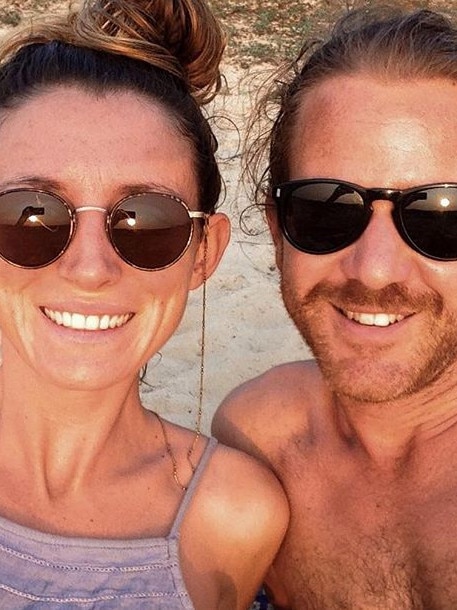

“Iranians are well trained in human shields and taking hostages and probably if I was an Australian in Iran I would be getting out as fast as possible because the Iranians might grab you,” he said.
“Doesn’t matter if you haven’t done anything they will just grab you so I think those people essentially we couldn’t recover them and any other Australians in Iran should seriously be thinking about withdrawing from the region rather than staying around.”
As of today, the Department of Foreign Affairs and Trade has warned Australians to reconsider all travel to Iran.
Anthony Cordesman, author and Middle East expert at the Center for Strategic and International Studies, said he use of cruise missiles and armed drones, whether by Iran or its Houthi proxies in Yemen, reflected a move toward unconventional military capabilities, including cyber attack, that defies traditional thinking about defence and security.
“Analysts have been warning about these shifts in the nature of war for years, but the recent strikes on Saudi Arabia have made it clear that they are now at least a limited reality,” he said.


